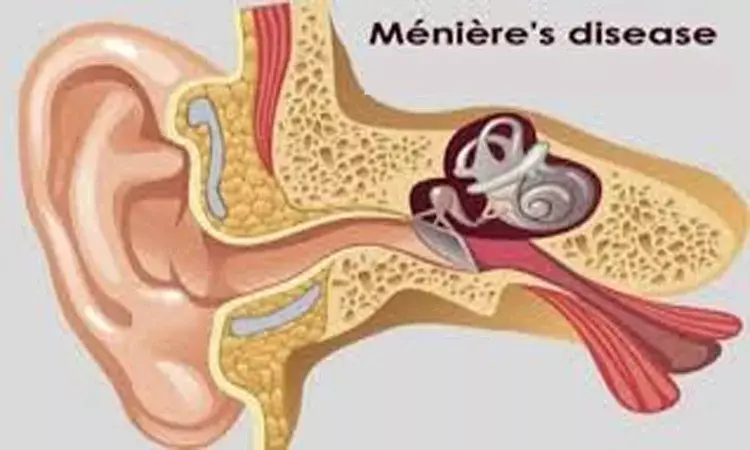- Home
- Medical news & Guidelines
- Anesthesiology
- Cardiology and CTVS
- Critical Care
- Dentistry
- Dermatology
- Diabetes and Endocrinology
- ENT
- Gastroenterology
- Medicine
- Nephrology
- Neurology
- Obstretics-Gynaecology
- Oncology
- Ophthalmology
- Orthopaedics
- Pediatrics-Neonatology
- Psychiatry
- Pulmonology
- Radiology
- Surgery
- Urology
- Laboratory Medicine
- Diet
- Nursing
- Paramedical
- Physiotherapy
- Health news
- Fact Check
- Bone Health Fact Check
- Brain Health Fact Check
- Cancer Related Fact Check
- Child Care Fact Check
- Dental and oral health fact check
- Diabetes and metabolic health fact check
- Diet and Nutrition Fact Check
- Eye and ENT Care Fact Check
- Fitness fact check
- Gut health fact check
- Heart health fact check
- Kidney health fact check
- Medical education fact check
- Men's health fact check
- Respiratory fact check
- Skin and hair care fact check
- Vaccine and Immunization fact check
- Women's health fact check
- AYUSH
- State News
- Andaman and Nicobar Islands
- Andhra Pradesh
- Arunachal Pradesh
- Assam
- Bihar
- Chandigarh
- Chattisgarh
- Dadra and Nagar Haveli
- Daman and Diu
- Delhi
- Goa
- Gujarat
- Haryana
- Himachal Pradesh
- Jammu & Kashmir
- Jharkhand
- Karnataka
- Kerala
- Ladakh
- Lakshadweep
- Madhya Pradesh
- Maharashtra
- Manipur
- Meghalaya
- Mizoram
- Nagaland
- Odisha
- Puducherry
- Punjab
- Rajasthan
- Sikkim
- Tamil Nadu
- Telangana
- Tripura
- Uttar Pradesh
- Uttrakhand
- West Bengal
- Medical Education
- Industry
Meniere's disease cases show increased thickness of choroid and Haller layer, states research

Maliheh Akbarpour and team discovered that on the side of Meniere's disease, the choroid and Haller layer are thicker, along with a higher ratio of subfoveal large choroidal vessel (LCV) thickness to subfoveal CT (SCT) compared to the control group. The findings of this study were published in The Laryngoscope Journal. The purpose of this study was to assess and compare choroidal thickness in individuals with Meniere's disease and a control group.
In this case-control analytical study, a total of 37 individuals with Meniere's disease and 37 healthy subjects were examined. Enhanced-depth imaging optical coherence tomography (EDI-OCT) was used to measure subfoveal choroidal thickness (CT), large choroidal vessel layer thickness, and the ratio of mean subfoveal large choroidal vessel thickness to mean subfoveal CT in the eyes on the Meniere's disease side (ipsilateral), contralateral eyes, and the control group.
The key findings of this study were:
After adjusting for age, sex, and migraine, a statistically significant difference was found in the mean subfoveal choroidal thickness (SCT) values between the ipsilateral and control groups (p = 0.04).
Additionally, there were significant differences in both the mean subfoveal large choroidal vessel (LCV) thickness values (p = 0.006) and the mean subfoveal LCV thickness/mean SCT ratio (p < 0.001) between the ipsilateral and control groups.
Although patients with a disease duration exceeding three years exhibited higher mean subfoveal LCV thickness/mean SCT ratios (67.35 ± 11.56 and 60.66 ± 11.27, respectively), this difference was statistically insignificant.
Individuals with a prolonged disease duration exhibited a reduced ratio of subfoveal large choroidal vessel (LCV) thickness to subfoveal choroidal thickness (SCT). These results suggest a potential involvement of the trigeminal vascular system (TVS) and neurovascular pathophysiology in Meniere's disease (MD) patients. Further comprehensive studies are necessary to establish more conclusive insights into the relationship between choroidal thickness (CT) and MD.
Source:
Akbarpour, M., Jalali, M. M., Alizadeh, Y., Nemati, S., Akbari, M., & Dourandeesh, M. (2023). The Association Between Choroidal Thickness and Meniere’s Disease: A Cross‐Sectional Study. In The Laryngoscope. Wiley. https://doi.org/10.1002/lary.31136
Neuroscience Masters graduate
Jacinthlyn Sylvia, a Neuroscience Master's graduate from Chennai has worked extensively in deciphering the neurobiology of cognition and motor control in aging. She also has spread-out exposure to Neurosurgery from her Bachelor’s. She is currently involved in active Neuro-Oncology research. She is an upcoming neuroscientist with a fiery passion for writing. Her news cover at Medical Dialogues feature recent discoveries and updates from the healthcare and biomedical research fields. She can be reached at editorial@medicaldialogues.in
Dr Kamal Kant Kohli-MBBS, DTCD- a chest specialist with more than 30 years of practice and a flair for writing clinical articles, Dr Kamal Kant Kohli joined Medical Dialogues as a Chief Editor of Medical News. Besides writing articles, as an editor, he proofreads and verifies all the medical content published on Medical Dialogues including those coming from journals, studies,medical conferences,guidelines etc. Email: drkohli@medicaldialogues.in. Contact no. 011-43720751


